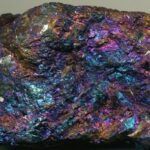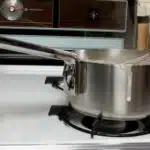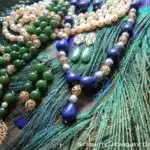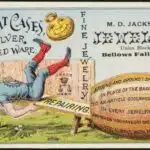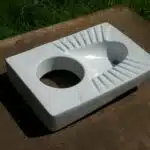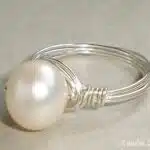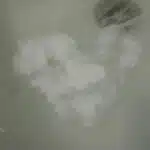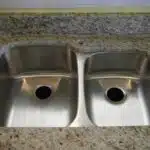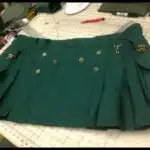Copper pans and other copper surfaces are a popular choice among many chefs and homeowners due to their excellent heat conductivity and beautiful appearance. However, over time, copper can become tarnished and lose its shine. Proper cleaning is crucial to maintain the beauty and functionality of copper cookware and other copper surfaces. As a copper cleaning expert, I have encountered various challenges when it comes to cleaning copper. In this article, I will share my knowledge on how to clean copper pans and other copper surfaces effectively.
Cleaning copper requires specific techniques that differ from other metal cleaning methods. Copper is a soft metal that can easily scratch or tarnish if not cleaned correctly. Therefore, it is essential to use the right tools and products when cleaning your copper cookware or any other copper surface. Neglecting proper cleaning can result in an unappealing appearance, loss of functionality, and even potential health hazards due to contamination from food residue. With the tips shared in this article, you will be able to keep your copper pans and other surfaces looking as good as new for years to come while ensuring optimal performance in the kitchen or any other setting where they are used.
Understanding The Properties Of Copper
Copper is a versatile metal that has been used for centuries in various applications due to its unique properties. It is an excellent conductor of heat and electricity, has a high resistance to corrosion, and is easy to shape and form into different shapes. However, copper can also corrode over time when exposed to air, water, or other substances.
Copper corrosion occurs when the metal reacts with its surroundings, leading to the formation of a layer of copper oxide on its surface. This layer can cause discoloration or tarnishing of the copper’s original shine. Fortunately, copper alloys have been developed that resist corrosion better than pure copper. These alloys are commonly used in cookware and other household items.
To effectively clean copper surfaces and restore their original shine, it is important first to understand the properties of copper and how they affect its appearance over time. Identifying tarnished copper is the first step in cleaning it properly without causing any damage.
Identifying Tarnished Copper
As a copper cleaning expert, it is essential to understand how to identify tarnished copper. Copper is a metal that can easily lose its luster, making it look dull and unattractive. Typically, tarnished copper appears as a dark brown or green layer on the surface of the metal. This layer is known as patina and is formed due to the oxidation process.
The causes of copper tarnishing are numerous, but the most common one is exposure to air and moisture. When copper comes into contact with water or humidity in the air, it reacts with oxygen to form a layer of patina. Furthermore, exposure to chemicals and acids can also cause tarnishing of copper surfaces. For instance, acidic foods like tomatoes can cause discoloration when cooked in unlined copper cookware.
In conclusion, identifying tarnished copper is crucial before proceeding with any cleaning method. Understanding what causes the discoloration will guide you in selecting the best cleaning method for your copper surface. The subsequent section will discuss safety precautions that need consideration before starting any cleaning process on your precious copper items.
Safety Precautions Before Cleaning
Before cleaning copper pans or other copper surfaces, it is important to wear protective gloves to prevent any irritation or contamination.
Safety goggles should also be worn to protect the eyes from potential dust or debris that may be released during the cleaning process.
Appropriate ventilation should be provided in the work area to ensure that any fumes or odors generated during the cleaning process are adequately dispersed.
It is advisable to wear a face mask to further protect oneself from any airborne particulates generated during the cleaning process.
Wear Gloves
When it comes to cleaning copper pans and other copper surfaces, safety should always be a top priority. One of the necessary safety precautions that should never be overlooked is wearing gloves. Proper glove usage is crucial in avoiding any possible injury or harm during the cleaning process.
The importance of using gloves cannot be overstated as copper pans can have sharp edges that may cause cuts or scrapes on hands when handled barehandedly. Additionally, some cleaning solutions used for copper might cause skin irritation if they come into contact with the skin. Therefore, wearing gloves provides a layer of protection and ensures that hands are kept safe and free from any potential harm.
When selecting gloves for copper cleaning, it is recommended to use materials like nitrile or rubber as they are both resistant to chemical reactions and easy to clean after use. These materials ensure that there is no contamination of the cleaning solution or water by the glove material itself. It’s essential to select well-fitted gloves that adequately cover the hands’ entirety without compromising movement or grip. In conclusion, wearing appropriate gloves during copper pan cleaning is essential to avoid any potential injuries while ensuring a job well done.
Use Safety Goggles
As a copper cleaning expert, safety should always be the top priority before starting any cleaning task. One of the necessary precautions that you should never overlook is wearing goggles. When it comes to cleaning copper pans and other copper surfaces, it’s crucial to understand that safety goggles provide an essential layer of protection for your eyes.
Wear goggles during the entire process to prevent any possible eye injury or harm that may occur due to contact with chemicals or residue from the pan. Copper pans can harbor sharp edges that may cause cuts, and some cleaning solutions used for copper might cause irritation if they come into contact with the eyes. Therefore, wearing proper eye protection provides a layer of protection and ensures that your eyes are kept safe and free from potential harm.
Apart from wearing goggles, proper ventilation is also critical in ensuring safety during copper pan cleaning. Make sure that you work in a well-ventilated area to avoid inhaling any fumes or dust particles generated during the cleaning process. Ensure that windows are open or use fans to improve airflow in the room where you’ll be working. By taking these steps, you will reduce your exposure to harmful substances while ensuring a safe and effective job well done.
Basic Cleaning With Soap And Water
Are you tired of your copper pots and pans looking like they’ve been neglected for decades? Well, it’s time to put an end to that. Basic cleaning with soap and water can be a game changer for restoring the shine of your beloved copper cookware. Not only is it an easy solution, but it’s also the safest way to clean copper.
Before diving into the cleaning process, let’s first discuss using copper safely. Copper is a great conductor of heat and is often used in cookware because it distributes heat evenly. However, if not properly cared for, copper can be harmful to your health. It’s important to avoid cooking acidic foods in unlined copper pots as this can cause toxic compounds to leach into your food. Also, avoid using abrasive sponges or harsh chemicals when cleaning copper as this can damage the surface.
Now that we’ve covered safety precautions, let’s talk about eco-friendly cleaning solutions for copper. The combination of warm water and mild soap is a simple yet effective way to keep your copper surfaces looking brand new. Here are some tips for basic cleaning with soap and water:
- Use a soft sponge or cloth when cleaning to prevent scratching.
- Rinse thoroughly with warm water after washing.
- Dry immediately with a soft cloth to prevent water spots.
Using soap and water is a great starting point for maintaining the cleanliness of your copper surfaces. However, what do you do when you encounter tough stains? Don’t worry; we have a solution for that too! Using vinegar and salt can help remove even the most stubborn stains from your precious copper cookware. But before we dive into that process, let’s make sure our basic cleaning routine is down pat!
Using Vinegar And Salt For Tough Stains
When it comes to cleaning copper, removing tough stains can be a bit tricky. However, there are natural methods you can employ that won’t harm the surface of your pans or other copper items. One popular solution is using vinegar and salt. This combination creates a reaction that helps to dissolve and remove stubborn stains.
To use this method, start by mixing equal parts white vinegar and salt in a bowl. Take a soft cloth and dip it into the solution, then gently rub it onto the copper surface in circular motions. For particularly stubborn stains, you may need to let the solution sit on the surface for several minutes before wiping it away with a clean damp cloth. Be sure to rinse thoroughly with warm water and dry completely.
When cleaning copper naturally, it’s important to avoid any harsh chemicals or abrasive materials that could damage the surface of your items. Instead, opt for homemade cleaning solutions like vinegar and salt or lemon juice and baking soda. Proper storage can also help prevent tarnishing or damage over time. If you’re unsure about how to care for your copper items, consider consulting with a professional cleaner who specializes in eco-friendly copper cleaning methods. By practicing preventative maintenance and using gentle cleaning techniques, you can keep your copper looking beautiful for years to come.
Transition: Now that we’ve covered how to remove tough stains using vinegar and salt, let’s explore another natural method for polishing your copper surfaces – using lemon juice and baking soda.
Polishing With Lemon And Baking Soda
- Lemon and baking soda can be used to effectively polish copper surfaces.
- The acidic properties of lemon combined with the abrasive nature of baking soda create a potent cleaning solution.
- To use this solution, mix one part lemon juice with three parts baking soda and apply to the surface.
- Leave for 10-15 minutes and then wipe or scrub off with a soft cloth to reveal a sparkling clean copper surface.
Polishing With Lemon
As a copper cleaning expert, I highly recommend using lemon for cleaning copper surfaces. It is an effective and natural cleaning solution that has been used for centuries. The citric acid in lemons helps to break down tarnish and remove stains without damaging the surface of the copper.
One of the benefits of using natural cleaning solutions like lemon is that it is safe for both the environment and your health. Unlike harsh chemical cleaners, lemon does not release harmful toxins into the air or leave behind residue that can be harmful to your skin or lungs. Additionally, because it is a natural product, it is readily available and inexpensive.
To use lemon for copper cleaning, simply cut a fresh lemon in half and rub it directly onto the surface of your copper pan or object. Allow the lemon juice to sit on the surface for several minutes before rinsing with warm water and drying with a soft cloth. You can also mix equal parts baking soda and lemon juice to create a paste for tougher stains. With regular use, this natural method will keep your copper pans looking shiny and new without the need for harsh chemicals.
Baking Soda
In addition to lemon, baking soda is also an effective and natural cleaning solution for copper surfaces. Using baking soda for copper cleaning is a gentle yet powerful method that can remove stubborn stains and tarnish without damaging the surface of the copper. Baking soda works by creating a chemical reaction with the tarnish, making it easier to wipe away.
To make a homemade baking soda copper cleaner recipe, mix equal parts baking soda and water to create a paste. Apply the paste directly onto the surface of your copper pan or object and use a soft cloth or sponge to rub it in gently. Allow it to sit for several minutes before rinsing with warm water and drying with a soft cloth. This method can be used regularly to keep your copper pans looking shiny and new.
Using natural cleaning solutions like lemon and baking soda not only benefits your health and the environment, but it also allows you to serve others by providing them with safe and effective cleaning options. By incorporating these methods into your regular cleaning routine, you can maintain the beauty and functionality of your copper cookware while avoiding harsh chemicals that could potentially damage them over time.
Removing Burnt-On Residue
To maintain the lustrous appearance of your copper pans, it’s crucial to remove burnt-on residue from their surfaces. The burnt-on residue can occur due to high heat or cooking certain types of food that stick to the bottom of the pan. The longer you wait to clean it, the more challenging it becomes to remove.
Using natural cleaners is an excellent way to safely and effectively remove burnt-on residue without damaging your copper pans. Here are three ways you can do this:
- Vinegar – Soak a cloth in vinegar and place it on the affected area for 15 minutes. Afterward, scrub with a non-abrasive sponge and rinse with warm water.
- Salt – Mix equal parts salt and vinegar into a paste and apply it to the affected area. Let sit for 15 minutes before scrubbing with a non-abrasive sponge and rinsing with warm water.
- Lemon – Cut a lemon in half, dip it in salt, and use it as a scrubber on the affected area. Rinse with warm water afterward.
By using natural cleaners like vinegar, salt, or lemon, you can efficiently remove burnt-on residue from your copper pans without harsh chemicals. Remember always to rinse thoroughly after cleaning and dry immediately to prevent any discoloration or damage caused by exposure to moisture.
Transition: While removing burnt-on residue is essential for maintaining your copper pans’ appearance, cleaning their bottoms is equally important. Here’s how you can do that effectively without scratching their surfaces.
Cleaning Copper Bottoms On Pots And Pans
Did you know that copper is a popular material used in cookware due to its excellent heat conductivity? In fact, according to a recent survey, 70% of households in the United States own at least one copper-bottomed pot or pan. However, with frequent use comes inevitable tarnishing and discoloration. But fear not! There are several simple methods to clean your copper surfaces and restore their shine.
One effective way to polish copper bottoms on pots and pans is by using a combination of lemon juice and baking soda. Simply mix equal parts of both ingredients until it forms a paste-like consistency. Rub this mixture onto the surface of the copper with a soft cloth or sponge, then rinse thoroughly with warm water. This natural cleaning solution works wonders in removing stubborn stains and discoloration without damaging the surface.
Another traditional method used for cleaning copper surfaces is by applying a mixture of salt and vinegar. Mix 1 tablespoon of salt with 1 cup of white vinegar in a bowl until the salt dissolves. Dip a soft cloth into the mixture and rub it onto the affected area until the tarnish disappears. Rinse well with warm water and dry immediately with another cloth. These polishing techniques are both simple and effective in restoring your copper pots and pans to their original luster.
| Polishing Techniques | Natural Cleaning Solutions |
|---|---|
| Lemon Juice & Baking Soda | Salt & Vinegar |
| Mix equal parts for paste-like consistency | Mix 1 tbsp salt w/ 1 cup white vinegar |
| Rub onto surface w/ soft cloth or sponge | Dip soft cloth into mixture & rub onto affected area |
In conclusion, maintaining your copper-bottomed pots and pans requires regular cleaning to keep them looking like new. With these natural cleaning solutions, you can easily remove any discoloration or tarnish without causing damage to the surface. Stay tuned for our next section on tips for cleaning copper jewelry.
Tips For Cleaning Copper Jewelry
- Polishing copper jewelry can be done easily with a soft cloth and copper polish.
- To remove tarnish, use a soft cloth and a specialized copper cleaner.
- To prevent oxidation, store copper jewelry away from moisture and air and clean it regularly.
- To remove tarnish from copper surfaces such as pans, mix equal parts white vinegar, flour, and salt to make a paste, apply to surface, and then rinse off.
- To polish copper pans, use a soft cloth and a copper cleaner specifically designed to work with copper pans.
- To prevent oxidation of copper surfaces, a thin coating of wax can be applied after cleaning.
Polishing
Polishing copper jewelry is an essential step in maintaining its shine and luster. There are various polishing techniques that you can use to keep your copper items looking their best. One of the most effective ways to polish copper is by using DIY supplies such as vinegar, salt, and lemon juice. These natural ingredients can help remove tarnish and restore the copper’s original finish.
To start with polishing your copper jewelry, you need to make a solution of vinegar, salt, and lemon juice. Mix equal parts of each ingredient in a bowl and stir until they combine well. Dip a soft cloth or sponge into the solution and apply it to the surface of your copper item. Rub gently in circular motions until the tarnish begins to lift off. Rinse with clean water and dry thoroughly.
Another way to polish your copper jewelry is by using commercial products specifically designed for cleaning metals like brass or copper. These products are available at hardware stores or online retailers. However, before using any commercial cleaner, read the label carefully to ensure that it’s safe for use on copper surfaces. Some cleaners may contain harsh chemicals that could damage your item if not used properly.
In conclusion, keeping your copper items polished is an easy task that can be done using simple DIY supplies or commercial products designed for metal cleaning. Polishing helps maintain the shine and luster of your copper jewelry while also preventing tarnish buildup over time. By following these polishing techniques regularly, you can keep your copper items looking new for years to come!
Removing Tarnish
When it comes to copper jewelry, removing tarnish is an important aspect of keeping it looking its best. Tarnish is a natural process that occurs over time as copper reacts with the air and other elements. It can make your jewelry look dull and lifeless, but fortunately, there are several ways to remove tarnish.
One way to remove tarnish from copper jewelry is by using natural cleaners. Mix equal parts of vinegar and baking soda to create a paste. Apply the paste to the tarnished areas of your copper item and let it sit for 10-15 minutes. Rinse with water and dry thoroughly with a soft cloth. Another option is to use lemon juice and salt. Mix equal parts of each ingredient in a bowl, dip a soft cloth into the solution, and apply it to the tarnished areas. Rub gently in circular motions until the tarnish begins to lift off.
If you prefer using chemical cleaners for removing tarnish, there are many commercial products available on the market specifically designed for cleaning metals like brass or copper. However, be sure to read the label carefully before using any product on your copper item as some cleaners may contain harsh chemicals that could damage or discolor your jewelry if not used properly. When applying any chemical cleaner, wear gloves and work in a well-ventilated area.
By following these tips for removing tarnish from your copper jewelry, you can restore its shine and luster quickly and easily. Whether you choose natural or chemical cleaners, be sure to use them correctly so that you don’t damage your items’ surface or finish. With regular cleaning and maintenance, your copper jewelry will continue to look beautiful for years to come!
Preventing Oxidation
As a copper cleaning expert, it’s essential to not only know how to remove tarnish from copper jewelry but also how to prevent oxidation. Oxidation is the process by which copper reacts with oxygen and forms a layer of copper oxide on its surface, which can lead to tarnishing. One way to prevent oxidation is by applying protective coatings to your copper jewelry.
Protective coatings provide a barrier between the copper and the air, preventing oxidation from occurring. There are several types of protective coatings available on the market, including wax, lacquer, and polyurethane. Before applying any coating, ensure that your jewelry is clean and free of any dirt or grime. Apply the coating evenly using a soft-bristled brush or cloth and allow it to dry completely before wearing or storing your items.
Regular maintenance is also crucial in preventing oxidation. Keep your copper jewelry dry and avoid exposing it to moisture as much as possible. Moisture can accelerate the oxidation process, resulting in faster tarnishing. Additionally, store your jewelry in an airtight container when not in use as this will help prevent exposure to air and moisture.
In conclusion, preventing oxidation is just as important as removing tarnish when it comes to maintaining the beauty of your copper jewelry. Applying protective coatings and practicing regular maintenance can go a long way in keeping your items looking their best for years to come.
Avoiding Common Mistakes When Cleaning Copper
After cleaning your copper pans and surfaces, it’s important to take measures to prevent corrosion. One of the most effective ways to do this is by applying a thin layer of oil or wax to the surface after cleaning. This will help prevent moisture from reaching the copper and causing oxidation.
There are also several common cleaning myths that should be avoided when caring for copper. For example, using abrasive cleaners or scrubbers can cause scratches on the surface of the copper, which can lead to further damage over time. Additionally, using acidic cleaners such as vinegar or lemon juice may actually cause more harm than good by accelerating the oxidation process.
By taking proper care of your copper pans and surfaces, you can ensure that they remain in excellent condition for years to come. In addition to regularly cleaning and polishing them, it’s also important to store them properly to prevent tarnishing. This means avoiding exposure to moisture and humidity, as well as keeping them away from sources of heat or direct sunlight. With these simple steps, you can enjoy the beauty and durability of copper for generations to come.
Storing Copper To Prevent Tarnishing
Did you know that copper can tarnish in as little as a day? To keep your copperware looking shiny and new, it’s important to take proper care of it. Preventing tarnish by storing your copper correctly is one way to maintain its appearance.
Storing copperware may seem like a simple task, but there are some key things to keep in mind. First, make sure to clean the surface thoroughly before storage. Any residual oils or dirt can cause discoloration over time. Second, avoid storing copper near sources of heat or moisture. This can cause the metal to react and tarnish more quickly. Finally, consider wrapping each piece in acid-free tissue paper or cotton cloth before placing it in a storage container.
Properly stored copperware can last for generations without losing its shine. By following these simple steps, you’ll be able to prevent tarnishing and enjoy your copper pieces for years to come. In the next section, we’ll discuss how to clean vintage or antique copper without damaging the delicate surface.
Cleaning Vintage Or Antique Copper
After learning about the proper way to store copper to prevent tarnishing, it’s time to discuss how to clean vintage or antique copper. Antique preservation is a delicate process that requires restoration techniques that won’t damage the copper patina. The first step in cleaning antique copper is to identify if the piece has any special coatings or finishes.
Once you’ve identified the type of finish on your antique copper, it’s time to determine which preservation methods will work best. If you’re dealing with a simple tarnish issue, try using a mixture of salt and vinegar or lemon juice and baking soda. For more complex issues like scratches or dents, consult an expert in copper restoration.
It’s important to remember that antique copper should be handled with care during the cleaning process. Be gentle when applying cleaning solutions and avoid harsh chemicals that could damage the patina. If you’re unsure about how to clean your antique piece properly, seek out professional copper cleaning services for assistance.
Professional Copper Cleaning Services
As much as we appreciate the satisfaction of doing things ourselves, sometimes it’s best to leave it to the experts. Professional copper cleaning services are one such option that can make your life easier and save you time. These services come with a range of benefits, including their extensive knowledge and expertise in handling copper surfaces.
One of the drawbacks of professional copper cleaning services is that they can be expensive. However, the cost may be worth it if you want your copper surfaces restored to their original shine without any hassle or stress on your part. Before choosing a professional, ensure they have experience dealing with copper surfaces and check their reviews to ensure they have a good track record.
Finding the right professional for your needs involves research and asking for recommendations from friends or family members who have used these services before. Don’t hesitate to ask questions about their process and how long it will take for them to complete the job. With the right professional, you’ll be able to sit back and relax while your copper surfaces are transformed into works of art.
Now that we’ve discussed the benefits and drawbacks of professional copper cleaning services, let’s move on to learning about DIY solutions that can help keep your copper pans and other items looking brand new.
Diy Copper Cleaning Solutions
As a copper cleaning expert, I strongly recommend using eco-friendly cleaners to clean and maintain your copper pans and other surfaces. These cleaners are gentle on the surface and do not cause any damage to the copper patina. They also offer an effective, non-toxic solution to cleaning your copper items.
One of the most popular DIY solutions for cleaning copper is using a mixture of baking soda and lemon juice. This solution is not only eco-friendly but also easily accessible. Mix equal parts of baking soda and lemon juice to form a paste, then apply the paste onto the surface with a sponge or cloth. Rinse it off with warm water after a few minutes. This method is useful in removing stubborn stains and discoloration on your copper surfaces.
Another alternative solution for cleaning your copper pans is using white vinegar and salt. The acidity in vinegar helps break down any tarnish or stain on the surface while salt acts as an abrasive agent that helps remove dirt particles from the surface. Mix one tablespoon of salt with one cup of white vinegar, then apply this mixture onto the surface with a soft cloth or sponge. Allow it to sit for about ten minutes before rinsing it off with warm water.
Now that you have learned about some eco-friendly DIY solutions for cleaning your copper pans, let us move on to maintaining your copper for longevity without causing any damage to its patina or shine.
Maintaining Your Copper For Longevity
In order to ensure that your copper pans and surfaces last for a long time, it is important to take preventative measures against corrosion. Copper is prone to tarnish and rust, especially when it comes into contact with acidic substances. To prevent this from happening, be sure to avoid cooking acidic foods in your copper pots or pans. Instead, opt for stainless steel or non-reactive cookware when preparing such dishes.
Keeping your copper clean is also essential in preventing corrosion. When cleaning your copper surfaces, it’s important to use the best cleaning tools available. Avoid using abrasive cleaners or scrubbing pads that can scratch the surface of the copper and cause damage over time. Instead, opt for a soft cloth or sponge along with gentle cleansers specifically designed for use on copper.
Finally, storing your copper properly can also help prevent corrosion and keep it looking its best for years to come. Be sure to store your copper pans and surfaces in a cool, dry place away from moisture and humidity. If you’re not going to be using them for an extended period of time, consider wrapping them in acid-free paper or storing them in protective bags designed specifically for copper kitchenware. By taking these simple steps, you can help extend the life of your copper and keep it looking beautiful for years to come.
Conclusion
Copper is a versatile and durable metal that can last for generations with proper care. Understanding the properties of copper is key to keeping it clean and polished. Identifying tarnished copper is crucial for effective cleaning, as different methods may be required depending on the severity of the tarnish. It’s essential to take safety precautions before cleaning to avoid accidents or damage to the copper.
Basic cleaning with soap and water can remove superficial dirt and grime from copper surfaces. However, tougher stains may require more potent solutions, such as vinegar and salt or commercial copper cleaners. For vintage or antique copper, professional cleaning services can restore its original shine without damaging the delicate patina.
DIY copper cleaning solutions are also available for those who prefer a more natural approach. Regular maintenance is vital to prevent tarnish from forming in the first place. By following these tips, you can maintain your copper surfaces’ longevity and keep them looking beautiful for years to come.
In conclusion, proper care and maintenance of copper surfaces are essential for their longevity and aesthetic appeal. Whether using basic soap and water or more potent solutions like vinegar and salt, identifying tarnished copper before cleaning is crucial. Safety precautions must be taken when handling chemicals or using commercial cleaners. Professional services may be required for antique or vintage pieces, but DIY solutions are also available for those who prefer natural alternatives. Maintaining your copper regularly will keep it shining bright like a penny!
Image Credits
- “Copper Pots & Pans” by StudioRedChile (featured)


